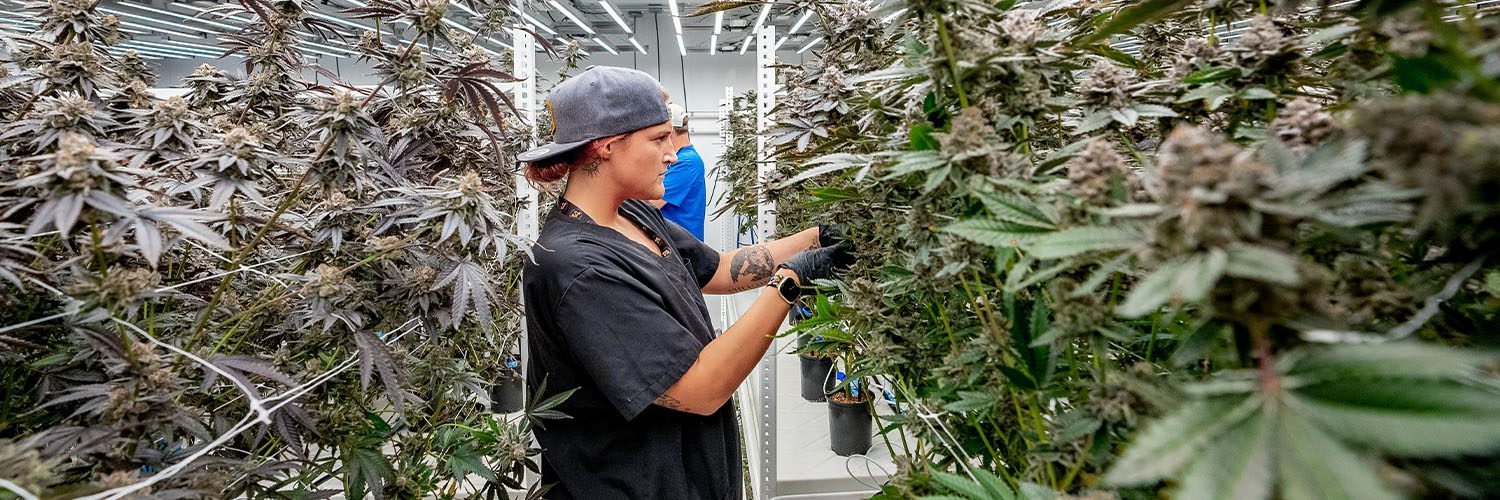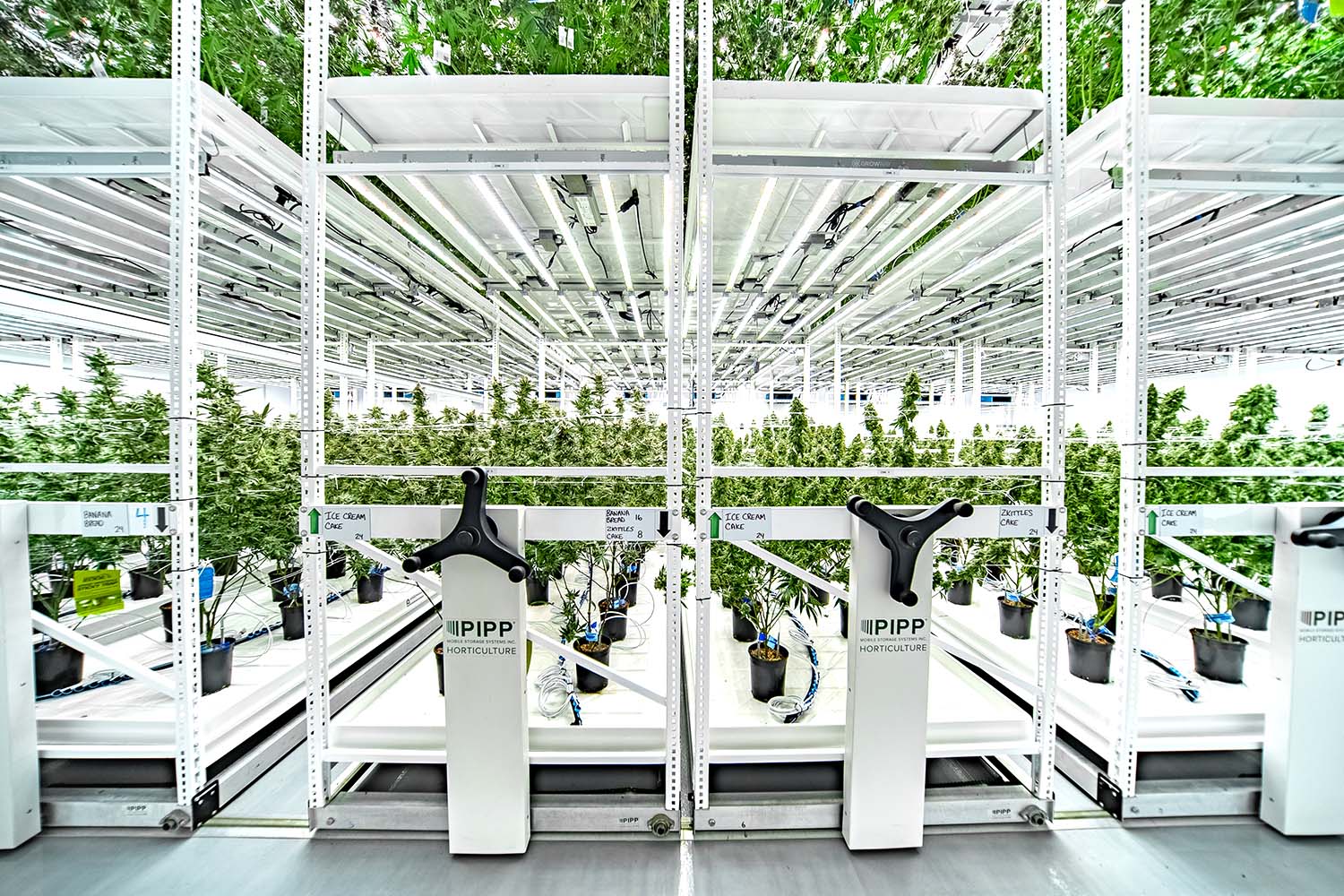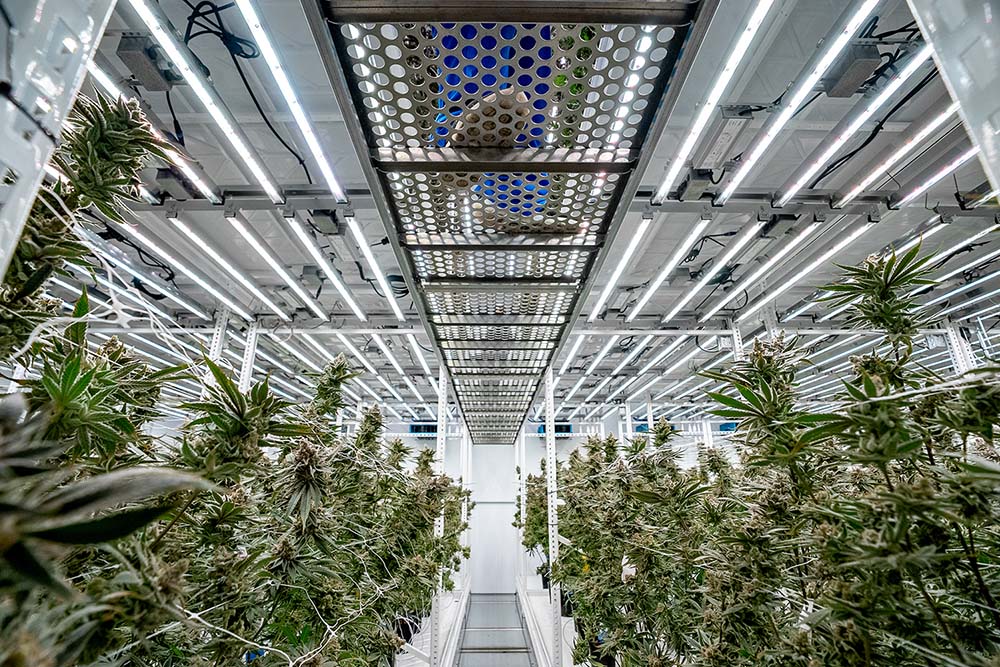Why Vertical Farming Is Important in Urban Real Estate Markets

At least two trends are converging for the controlled environment agriculture (CEA) industry: a slow commercial real estate crash in major American cities and broad inflation on input costs. Cannabis growers especially need to get as much bang for their buck on their indoor cultivation facility, and urban settings are perhaps a surprising source of possibility now.
Following the pandemic, major cities like Washington, D.C., New York City and Denver hoped to flip newly vacant office space into residential units. That hasn’t entirely worked, partially because of consumer inflation concerns.
That opened an opportunity to rethink warehouse and office space in the light of a rising CEA industry.
For cannabis growers, these spaces can be especially appealing.
In most cases ( depending on state law), cities provide proximity to retail distribution and broad customer bases. To facilitate cannabis cultivation and other CEA practices, these areas tend to already have robust infrastructure, which is essential for the high energy and water demands of this industry.
With the U.S. cannabis market projected to grow from $115 billion in adult-use sales in 2024 to $170 billion in adult-use sales in 2028, there’s a wave of new businesses on the threshold of licensure or expansion that may thrive in more urban environments.
Here are three benefits (and challenges) of building out an indoor cultivation space within urban city centers.
The Benefits of Vertical Farming in Cities
#1: Maximizing Space Utilization
A primary hurdle to this type of CEA development has long been cost. In mid-sized and larger American cities, commercial or industrial real estate is often expensive and limited in availability. This is changing in the post-pandemic real estate market, but those long-standing challenges have often kept cannabis businesses, strapped for cash early on, from setting up shop in city environments.
Vertical farming addresses this constraint by expanding overall canopy upward, doubling or even tripling the actual grow space. For businesses acquiring land or real estate that may not be as expansive as an industrial footprint in a more rural community, vertical farming lets growers exponentially increase their production capacity in a given room.
This spatial efficiency is crucial in densely populated areas, making vertical farming particularly appealing to city planners and developers looking to attract new business to their jurisdiction.
Buckeye Relief, based in Eastlake, Ohio, just east of downtown Cleveland, built out a new facility and eventually saw the need to expand upward. Early on, the Buckeye Relief team ran into environmental trouble with an original site, so they pivoted to a 10-acre plot of land offered by the city of Eastlake. It fit the company’s needs for the medical cannabis market, but expansion would be inevitable.
Mobile racking on the company’s initial single-tier setup helped them achieve their expansion to a second tier within the existing footprint of their facility. Future footprint expansions are one thing, but growing up and adding vertical tiers to a given production facility can provide significant returns.
Now, the company runs two tiers of production space, and they are preparing for the rapidly expanding customer base that will come from the greater Cleveland area once adult-use sales begin (following legalization in November 2023).

#2: Reducing Environmental Impact and Water Use
Vertical farming in a closed environment allows grow teams to cut back on water and nutrient use, generally. Water use efficiency is especially important in more urban neighborhoods, where resources are under constant pressure from the dense populations they support.
Research is ongoing on this topic, but vertical farming has proven in some studies to reduce water usage significantly. In one 2023 study, vertical farms reduced water use by 28% to as much as 95% compared to greenhouse environments in the same region.

#3: Shielding Your Crops from Tricky Environmental Conditions
In environments like California and its hyper-competitive cannabis market, growers across the state are competing with small outdoor farms. Those smaller farms can reap serious benefits from a photoperiod perspective; nestled in Humboldt County groves, many farms achieve optimal microclimates and draw ideal sunlight for their plants. They’re also exposed, of course, to the elements and a rapidly changing climate.
Vertical indoor farming can surmount a lot of those challenges.
James Cunningham, CEO of Fog City Farms, told us in a recent podcast episode, that moving into the vertical farming segment provided his company with a competitive advantage–and a space to accelerate research and development ideas.
“You can achieve a consistency that you can’t achieve in other growing platforms,” he said. “The distance between your light bars and the [light] throw, and intersecting lighting patterns is so consistent throughout the space that you get very consistent [plant] development.”
Those conditions are ideal for businesses developing end products for a brand, which is a paramount concern right now in cannabis. Consistent products and engaging delivery on retail shelves are must-haves in most cannabis markets.
Fog City Farms is based in Watsonville, Calif., just outside Santa Cruz, and it is a fine example of this mid-sized city real estate market opportunity.
The Challenges
Of course, the story is not all rosy. The cannabis business is nothing if not complicated.
Setting aside the bevy of production challenges in cannabis cultivation just on face value, the prospects of acquiring real estate and setting up a vertical grow offer their own unique roadblocks that must be overcome:
#1: Zoning
Zoning regulations will vary from one jurisdiction to the next, but, nonetheless, indoor cannabis cultivation has always faced an uphill battle.
While the density of cities will place your cultivation business near its retail base, there’s a trade-off. Most zoning regulations come with buffer language and even limits on the number of cannabis businesses that may be allowed to operate.
That buffer language often includes certain distances that businesses must place between their facility and schools, daycares, or churches. In a city environment, this is difficult.
As far as the limits on cannabis businesses, some cities do not necessarily distinguish between dispensaries and cultivation operations; a city that allows a lot of dispensaries to open up shop may leave few, if any, cultivation licensing opportunities on the table.
As more cities recognize the economic benefits of supporting urban agriculture and cannabis industries, there may be a shift toward more accommodating policies. This is a great example of where active cannabis businesses can get involved with local legislatures and regulatory bodies to bring about some change for the industry.

#2: Community Engagement
Speaking of working with local government, it’s important for businesses planning on acquiring real estate in a city to remain mindful of the existing community.
As with all business development issues in cannabis, the surrounding community of people must be considered. This is partly due to the slowly dying stigma that accompanies the industry and also partly because cannabis is broadly seen as an industry capable of delivering tremendous returns to the local community.
To fulfill that promise, business owners who run vertical farms in cities must listen to their neighbors’ questions and comments.

#3: Conversion Costs
New builds are possible and perhaps even ideal when considering a footprint in a major city, but retrofitting an older warehouse is a common enough development plan for cultivation businesses. This is where the real estate opportunity lies, as mentioned earlier.
However, as the commercial real estate market cools in some cities, brokers and business owners must be very knowledgeable about what they’re looking for in a building. Retrofitted spaces will deliver all sorts of unique challenges and costly work. A cultivation facility, especially one that’s set up vertically, has very specific requirements tailored to its operational needs, making the adaptation of existing structures complex and often costly.
When operators consider moving into a pre-existing building, they frequently encounter the need for substantial upgrades to accommodate the specialized infrastructure of cultivation operations. Notably, these facilities require elaborate setups for mechanical, electrical, plumbing, and irrigation systems.
These systems typically involve heavy equipment and extensive piping, which are often mounted on or suspended from the roof. Upgrading the HVAC system is one of the most important processes in a retrofit project, as highly sterile vertical grow environments demand great efficiency (as opposed to whatever types of businesses the building may have housed previously).
Also, consider a closed-loop recycled water system, which can generate the resource conservation benefits mentioned earlier. This is a significant upfront cost.
One pivotal problem arises because most conventional roof structures are not engineered to bear such heavy loads. This mismatch means that the roof must often be structurally reinforced to prevent integrity issues.
Conclusion
In summary, the intersection of declining commercial real estate demand in cities and rising agricultural costs opens a valuable opportunity for vertical farming in urban areas. Although high property prices and complex regulations pose challenges, repurposing vacant office and warehouse spaces offers a promising solution for CEA. Vertical farming systems can capitalize on existing city infrastructure to maximize productivity and minimize environmental impact.
Urban vertical farming makes efficient use of limited space and allows growers to be closer to dense consumer markets, reducing transportation costs and spoilage while boosting food security. By adopting vertical farming practices, producers can create sustainable, technologically advanced cultivation facilities that meet changing regulatory standards. This approach aligns with global trends toward urban resilience and sustainability, providing economic growth while meeting consumer demand for fresh, eco-friendly, and locally sourced products.
Repurposing commercial real estate for vertical farming can transform city landscapes, offering a sustainable, efficient, and cost-effective solution that helps address food security and climate change challenges.


